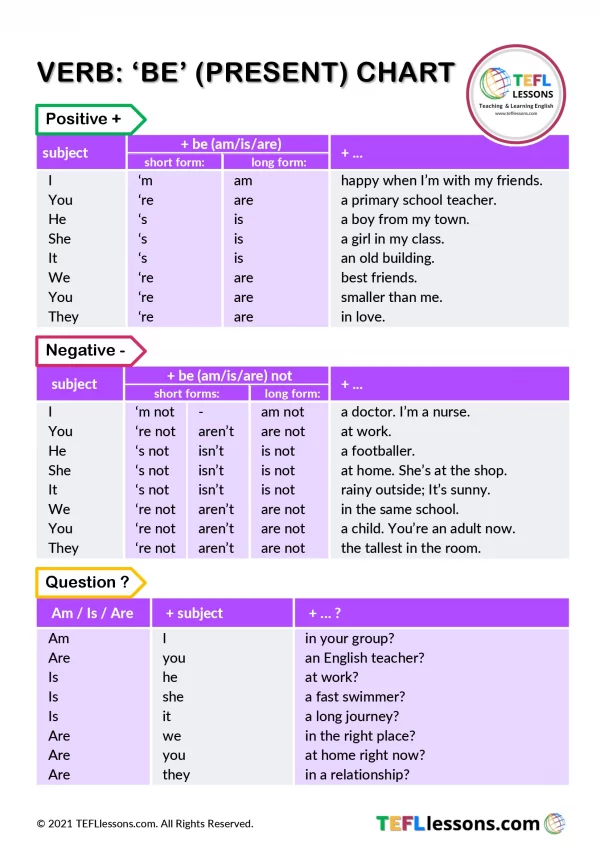SIMPLE PRESENT VERB TO BE
AM- ARE-IS
The verb to be
The verb to be is the most important verb in the English language. It is difficult to use because it is an irregular verb in almost all of its forms. In the simple present tense, to be is conjugated as follows:
Affirmative forms of the verb to be
Subject Pronouns | Full Form | Contracted Form |
I | am | 'm |
you | are | 're |
he/she/it | is | 's |
we | are | 're |
you | are | 're |
they | are | 're |
Interrogative forms of the verb to be:
Am | I? |
Are | you? |
Is | he/she/it? |
Are | we? |
Are | you? |
Are | they? |
Negative Forms of the verb to be:
Subject Pronouns | Full Form | Contracted Form |
I | am not | 'm not |
you | are not | aren't |
he/she/it | is not | isn't |
we | are not | aren't |
you | are not | aren't |
they | are not | aren't |
Examples:
§ Is Brad Pitt French?
§ No, he isn't. He's American.
§ What about Angelina Joli? Is she American, too?
§ Yes, she is. She is American.
§ Are brad Pitt and Angelina Joli French?
§ No, They aren't. They are American.
Use of the simple present of to be
The principal use of the simple present is to refer to an action or event that takes place habitually, but with the verb "to be" the simple present tense also refers to a present or general state, whether temporary, permanent or habitual.
§ I am happy.
§ She is helpful.
The verb to be in the simple present can be also used to refer to something that is true at the present moment.
§ She is 20 years old.




No hay comentarios:
Publicar un comentario